Billy Cook — The Original ‘Secret Footballer’ and his Peruvian Adventure
A member of Everton's 1939 title-winning team that was broken up by WWII, Billy Cook went on an extraordinary coaching journey that took him around the world, including to South America where he took charge of the Peruvian national team
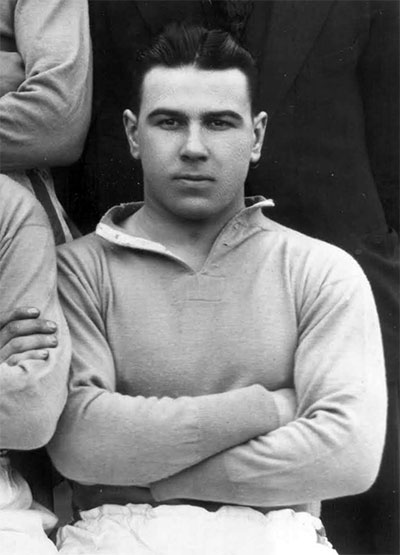
For more than a decade the so-called ‘The Secret Footballer’ has been producing an anonymous column for The Guardian newspaper and producing (to date) five books which lift the lid on the life of a professional soccer player. Speculation has been rife as to the identity of the author, with a former Reading and Stoke City forward being many amateur sleuths’ pick.
The concept is nothing new, however. Over 70 years before this mystery player submitted his first column to the Guardian, a top-flight footballer was doing something very similar for the weekly Topical Times magazine – and he played for Everton. The Player’s Weekly Diary ran from the autumn of 1937 to May 1939 – it might have continued, but for the outbreak of war.
The identity of the player was not hard to deduce, from the descriptions of matches and other events alluded to. Before long, many young members of the magazine’s readership were writing to Billy Cook, the Toffees’ Northern Irish full-back, demanding to know if it was him.
It was indeed, Cook, Coleraine by birth, but Clydeside by upbringing, who had had submitted his weekly reports on life as a footballer. Signed from Celtic in 1932 to fill the void left by an injury to Ben Williams, Cook (who signed autographs as both ‘Billy’ and ‘Willie’) was a tough defender, blessed with the fine touch of an inside-forward. He served as vice-captain to Jock Thomson when the Blues advanced on the league title in 1938/39 season – which forms the basis of my latest book: Broken Dreams, Everton, The War and Goodisons’s Lost Generation, the first output of the new Toffeeopolis imprint.
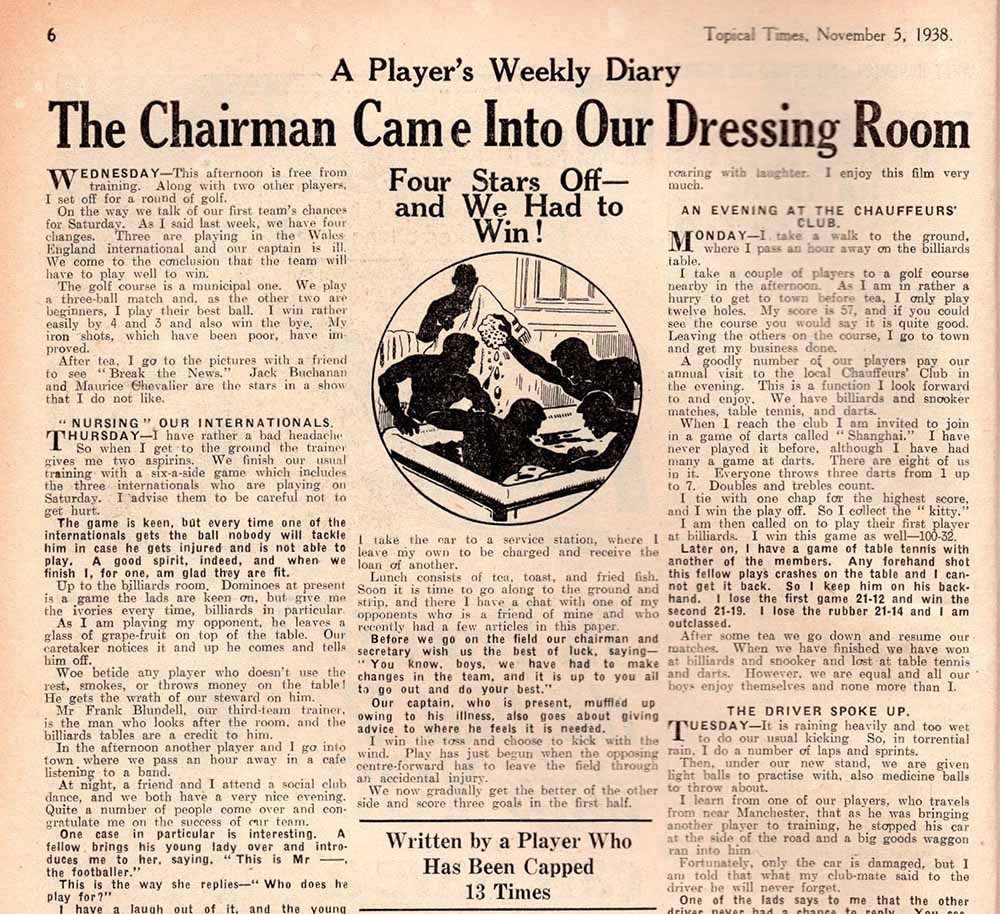
Players Weekly diary – 5 November, 1938
The magazine serial gave insights into Cook’s training regime at Goodison Park (he, literally, lived around the corner from the ground, on Goodison Avenue) and regular squad stays at Harrogate. It also included brief synopses of matches he played in for club and country, plus insights into his social life which, as the owner of a car (not common then, even for a footballer), included regular trips to the cinema, tea rooms, dances, golf courses, and along the Sefton and North Wales coasts. Inside Goodison’s main stand, he was a dab hand on the billiards table - with Tom White his closest rival for supremacy with the cue. Although the identities of clubmates were thinly veiled in his columns, the reader got a clear taste of the camaraderie in an Everton squad brimming with characters like Alex Stevenson, Wally Boyes, Tommy Lawton and Joe Mercer.
Cook was one of the few Everton first-teamers to serve abroad during the war (Ted Sagar and Archie Barber were two others), being based in India for some time. When domestic league football resumed in 1946, he was well into his thirties and was released by Everton after 250 competitive appearances (with all six of his goals coming in the 1938/39 season). He had a brief spell playing in North Wales and it was there that he embarked on a quite extraordinary coaching journey which took him to Asia, South America, Scandinavia, Ireland and around England. Most sensational was his appointment as coach of the Peruvian national team in 1952. A number of British coaches had tried their hand in Europe, but Latin America was largely unchartered territory for so-called ‘Misters’. One person that Cook did follow in the footsteps of was Jack Greenwell, who coached there in the 1930s.
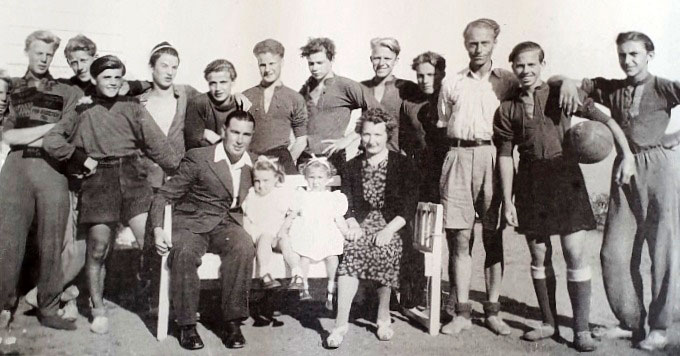
Billy Cook and family at SK Brann
The mission, passed down from Major General Odria, who had acquired power in a coup, was to win the Copa America as a host nation, thereby bringing reflected glory on the military regime. That all said, Cook’s arrival, described below in a Peruvian newspaper, was decidedly low key (note: the original report misspelt his surname name as Coock, it’s been corrected here):
At 21:35 last night, Mr. William Cook, the British coach hired by the Peruvian F.A. to take charge of the national team in the build up to the next South American Championship to take place here in Lima in February 1953, landed on board the ‘Turista’ of Panagra Airways.
Mr. Charles Dean was the only one to meet Mr. Cook at Limatambo Airport. He left the aircraft like any other tourist, his face not lit up by photographer flashbulbs. There wasn’t even a note of excitement among the customs staff given that no one knew ‘Mr. Cook’.
On his arrival in Lima, Mr. Cook took up residence in Suite 505 of The Hotel Bolivar. Leaving the lift and turning left, it was 08:30 in the morning when we went to interview him. We knocked twice and a semi-rough voice answered: ‘Come in’. We went in and our first surprise was to see Mr. Cook reading a crime novel in English that he had got from the hotel bookshop.
We informed Mr. Cook we wished to interview him, asking him at the same time if he spoke Spanish. The British coach told us that he could not receive us in such a state and asked that we do the interview at 10:00. We insisted on interviewing him and Mr. Cook said that it was impossible to talk in bed – without having bathed or having had breakfast. He liked to do things well, or not at all. The photographer prepared his camera to take a picture of Mr Cook in bed. He later picked up an English-Spanish dictionary and, after searching for the appropriate words for a minute said ‘Muchas gracias, no puedo. Buenos días.’
We chose to leave Mr. Cook to return at the revised time. On shaking our hands the British gentleman told us that at 10:00 he would be meeting with the president of the National Sports Committee and that this would, he believed, be the best time to carry out the interview.
At 09:55 in the morning we returned to the Hotel Bolivar. This time we found Mr. Cook in the lobby with the well-known British referee, Mr. Charles Dean. He wore a fawn suit with a blue tie, well-groomed with a silk handkerchief in his breast-pocket. Mr. William Cook is of medium stature. He is 42 years old. It’s worth noting he has aged well because his face is wrinkle free. He’s relatively fat, but still athletic. A very difficult person. Excessively energetic. He doesn’t put up with anything. When they tried to take a second photo he got annoyed saying he hadn’t come to be a ‘propagandista’ but to be a football coach. He does not like to give opinions related to his profession and does not like to joke about it. During the 15-minute duration of the interview there was just one smile of appreciation, when we said goodbye.
The referee Mr. Dean served as translator during the interview. Mr. William Cook tells us he was born in Ireland 42 years ago. He has been a footballer during 13 consecutive seasons. He represented his country 13 times – 4 as captain. His position was full-back. He played for Celtic from 1929 to 1932. He has been one of the best ball-players in the English professional game and can still play a match. He is a big fan of both the gymnasium and discipline.
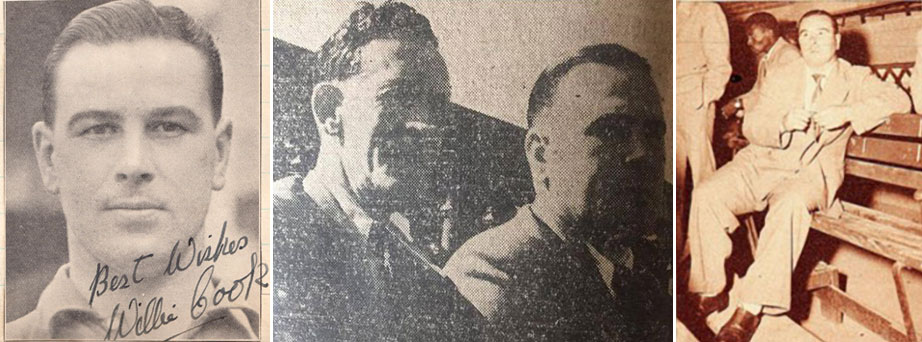
Left: Photo signed as Willie Cook; Middle: Billy Cook and Charles Dean watching a match; Right: Billy in Peru
It was a short-lived sojourn in Peru, for multiple reasons. The language barrier was an issue for a non-Spanish speaker but Cook declined the services of an interpreter in training sessions. He later recalled: ‘I would communicate with the players in my own way, and it worked fine. Most of them could speak a bit of English, anyway.’ Then there were the tricky politics of football in a country ruled by a junta, coupled with Cook’s sometimes brusque manner and a tactical approach which won him few allies. Tensions rose when Angel Fernandez Roca, an Argentine, being parachuted in to work alongside Cook with the team.
Ultimately, the results were poor, a defeat to Uruguay confirming that Peru would not lift the Copa on home soil. This confirmed the end of the Irishman’s spell on the Pacific seaboard and he was soon on his way back to Merseyside. The Irishman’s professional coaching career was over when he resigned from his post at Norwich City in 1959.
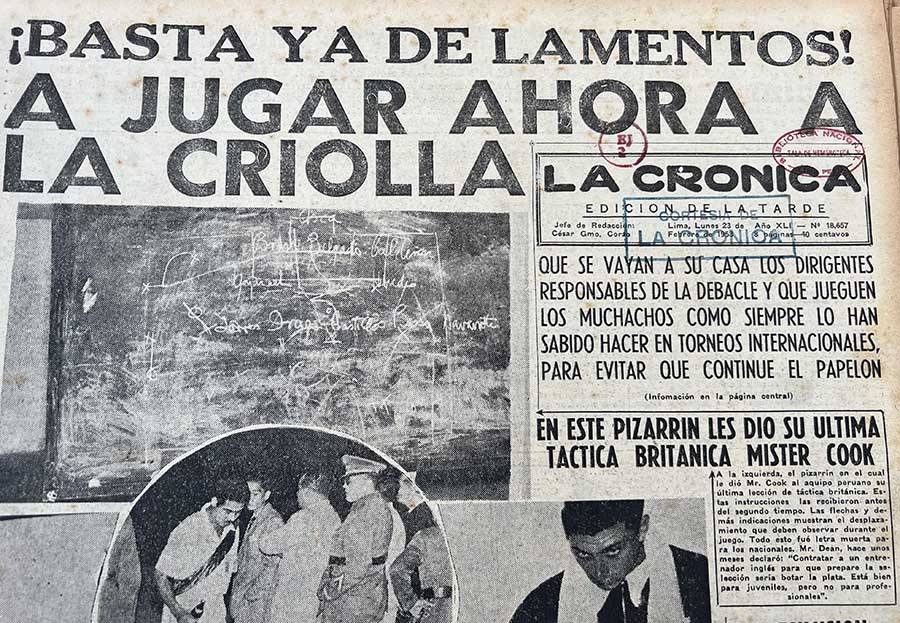
"Enough of Regrets" newspaper headline
A man of contrasts, Cook could have a decidedly menacing air about him – notably after imbibing a few drinks - but he was something of a man of letters and would diligently respond to correspondence from football supporters. One example of his largesse was when he befriended George de Booij, a young Dutch man who was living period in Liverpool for a few months. Cook gave him some original club photos and other items to take back to the Netherlands (de Booij became an avid Evertonian and returned to watch the Blues at Goodison Park in 1985).
The former Irish international had an enduring passion for imparting his football knowledge on youngsters. In the immediate post-war years, he had been a coach for the local football association, taking training sessions at schools in the Liverpool and Cheshire region. By the 1960s, with time on his hands, he would voluntarily lead regular coaching sessions for youths in a Bootle park. His keynote trick was to boot the ball high into the air and trap it, dead, at the first attempt – amazing his pupils.
By the 1980s he was a fixture at local hostelries, dressed in tweet suit, often wearing a trilby hat, showing patrons his prized medals and photos in return for being stood a drink. Dr John Rowlands, a Formby-based football historian who had befriended one-time Toffees winger Albert Geldard, arranged for the former Everton pair to be reunited at a pub one evening. Ironically, the former outside-right had been petrified of his 1930s clubmate, but the evening went well. Cook was most disappointed when he turned up at the same venue the next week, only to discover that the get-together had been a one-off.
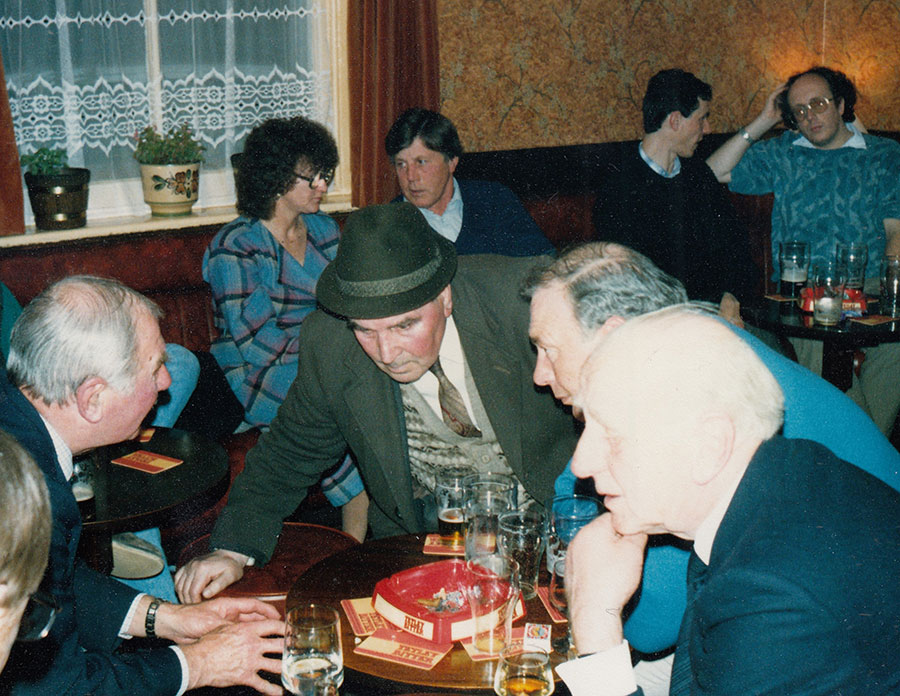
Billy Cook on the night out with John Rowlands and Albert Geldard in the 1980s (Billy wearing a hat)
In later life he would attend Everton matches but was non-plussed when the club failed to furnish him with complimentary tickets for some of the biggest matches (this was some years before the establishment of the Everton Former Players’ Foundation, which has helped to look after many old Toffeemen). He spent his final years living on Strafford Drive, before being admitted to hospital in his final months, quite possibly suffering from a form of dementia. One of the most feared yet admired full-backs of the 1930s died on 11 December 1992 at 83 years of age. He lies in an unmarked grave in Bootle Cemetery.
Billy Cook was not alone in facing difficult times after the fame and success – if not riches – enjoyed on the pitch at Goodison Park in the 1930s. Broken Dreams delves into lives of the entire Class of 39 at the School of Science. These range from the famous names like Ted Sagar, Joe Mercer, Tommy Lawton and T.G. Jones to the tales less told, like those of Torry Gillick, Wally Boyes, Alex Stevenson, Stan Bentham, Norman Greenhalgh, Jock Thomson, Jimmy Cunliffe, Bob Bell, Gordon Watson, Archie Barber et al.
Further Reading: Broken Dreams, Everton, The War and Goodison’s Lost Generation. Published by the Toffeeopolis imprint (a collaboration between James Corbett, Gavin Buckland, Simon Hart and Rob Sawyer) and through Amazon and bookshops.
Acknowledgement:
My thanks got to Eduardo Combe for supplying the newspaper extracts/images and to John Shearon for translating from Spanish. I appreciate the help, also, of Graham Clare and relatives of Billy Cook, notably John McFeeley.
Sources: Topical Times and several Peruvian newspapers
Reader Comments (12)
Note: the following content is not moderated or vetted by the site owners at the time of submission. Comments are the responsibility of the poster. Disclaimer ()
2 Posted 10/06/2024 at 19:16:09
Thank you for your research and insight into times gone by. You really ‘do know your history'!
3 Posted 11/06/2024 at 09:37:32
I can be fairly precise about the timings because we finished work at 4-15 on a Friday, Poets Day, and the Pubs didn't open until 5pm then. So it was a regular Friday venue for me and my thirstier work mates.
Well dressed, and with startlingly black hair for a man of his years, he showed us photos of himself with Dixie Dean, and some medals. Looking pretty fit for a man who must've been pushing 70, by then.
I knew about him from my Dad, who in common with many Dads at the time, regaled us with tales from the golden years. He took me to my first gameu at Goodison in February 1954, for my 6th birthday. His dad did the same for him in 1917, a wartime game.
Willie started off polite and friendly but sadly got a bit more persistent for more drinks. We got him one last drink and left.
I told my Dad about meeting him. He said†Billy was a great full back, hard as nails. The best. Was he on the cadge for drinks?â€
4 Posted 11/06/2024 at 10:05:40
5 Posted 11/06/2024 at 10:28:41
You might be surprised that a couple, at least, of relative modern day Everton heroes were real ‘brass hinges' in the pub. Great players and favourites of mine and I wouldn't reveal their names for the world.
One fella I knew who drank with one of the above, when I asked him why he wasn't drinking with him anymore, replied “I can't afford him!â€
6 Posted 11/06/2024 at 10:35:13
I worked with Tommy Jones in the 1990s, and he used to visit Jimmy O'Neill, who lived in Bootle I think. Tommy took his captaincy responsibilities seriously even then. The club had looked after Jimmy by then, he was in poor health.
Tommy was a seriously nice man, a gent.
I met Jimmy's son Paul, many years later. He worked for a big insurance company. I dint know he was Jimmy's son. We started talking about Everton, and coming up from the second division in 1954. He asked me who was the goalie. I told him, and he said “good manâ€. He was glad I remembered. Had nothing but good words to say about Everton. They arranged ramps in the house for a wheelchair and stair lifts for him. Just looking after him.
He told me about his Dad's time at Stoke and playing for Ireland. All the players in the hotel lobby on a Sunday, going to Mass together. At Jimmy's funeral, Paul and a few old players were picked up by Terry Conroy, by then a cabbie. I remembered him as good player with flame red locks.. Paul said he was as bald as a coot!
7 Posted 11/06/2024 at 10:47:26
The only one I drank with regularly was Brian Labone, a seriously thirsty man, but he always paid his corner. Another real gent and great stories too. Loved his horses, and owned one called Goodison I think.
We drank in the White Star, a Kopite pub in town, and they opened half an hour early to accommodate Brian, who had a regular round of pubs at lunchtime. They put up his photo on the wall after he died. Quite a tribute to an Evertonian from a dyed in the wool Kopite. I think the landlord's name was Albie.
8 Posted 11/06/2024 at 11:35:01
There is a vast difference between the players of the fifties and early sixties and the players of today.
I've related on here how I used to get on the bus going to the game and have a chat to Dave Hickson, John Willie Parker etc and also coming home on the train from away games with those players.
Eggo (Tommy Eglington), when asked about getting an Eire programme for my mate, told me that was no bother and had one for him the next game we met.
Cliff Britain, the Everton manager, offering me a pound note to get something to eat at Leeds in our promotion season, and me thanking him but refusing because we'd just had something.
Today is different and you just have to go with the flow even though it's not your style, being a bit slow getting to the bar will never change either because there are tight-arses in every era, unfortunately.
9 Posted 11/06/2024 at 12:02:56
Jimmy O'Neill apparently used to get the bus home on County Road, with his boots under his arm. Everybody in the queue used to chat amiably to him, but if they'd played poorly and lost, people would turn their back on him and ignore him. But always civilised.
We got married in 1970, and got a house in Maghull. Our local was The Red House, and a lot of players used that. Roger Kenyon and his wife used to go there, mob handed usually. But again, never any issues, but he was a big hard lad too.
Sandy Brown used to join in, and he was a bit scary at times, but alright generally. But always happy to mix in and chat. Never any issues. Not as big as he looked on the pitch. I think the club helped him too, when he got a bit older and had health issues too. Gordon West, similarly.
Labone said he refused to carry his coffin unless he lost weight. He was 30 stone apparently and used to get his clothes from High And Mighty on Lord Street, apparently.
You're right about the “careful drinkers†too. I only really knew a couple, and they were usually advised as to their parsimony.
10 Posted 11/06/2024 at 23:03:19
Truth stranger and more entertaining than fiction yet again.
11 Posted 12/06/2024 at 10:19:20
Chris, an interesting point. Often when you meet or see players in person, many are not the giants we perceive.
12 Posted 15/06/2024 at 22:25:13
Add Your Comments
In order to post a comment, you need to be logged in as a registered user of the site.
Or Sign up as a ToffeeWeb Member — it's free, takes just a few minutes and will allow you to post your comments on articles and Talking Points submissions across the site.
How to get rid of these ads and support TW


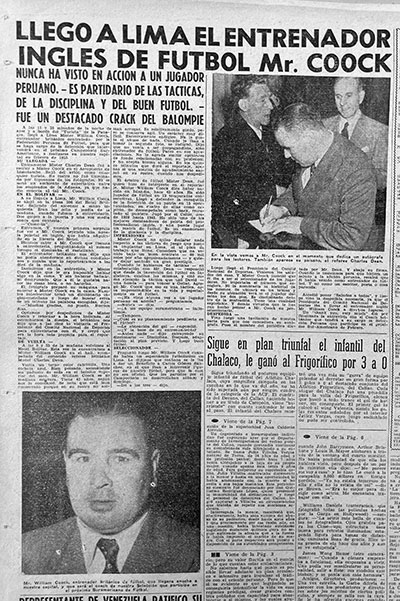
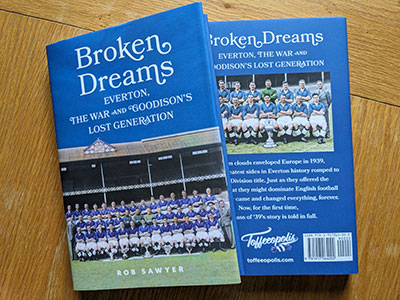

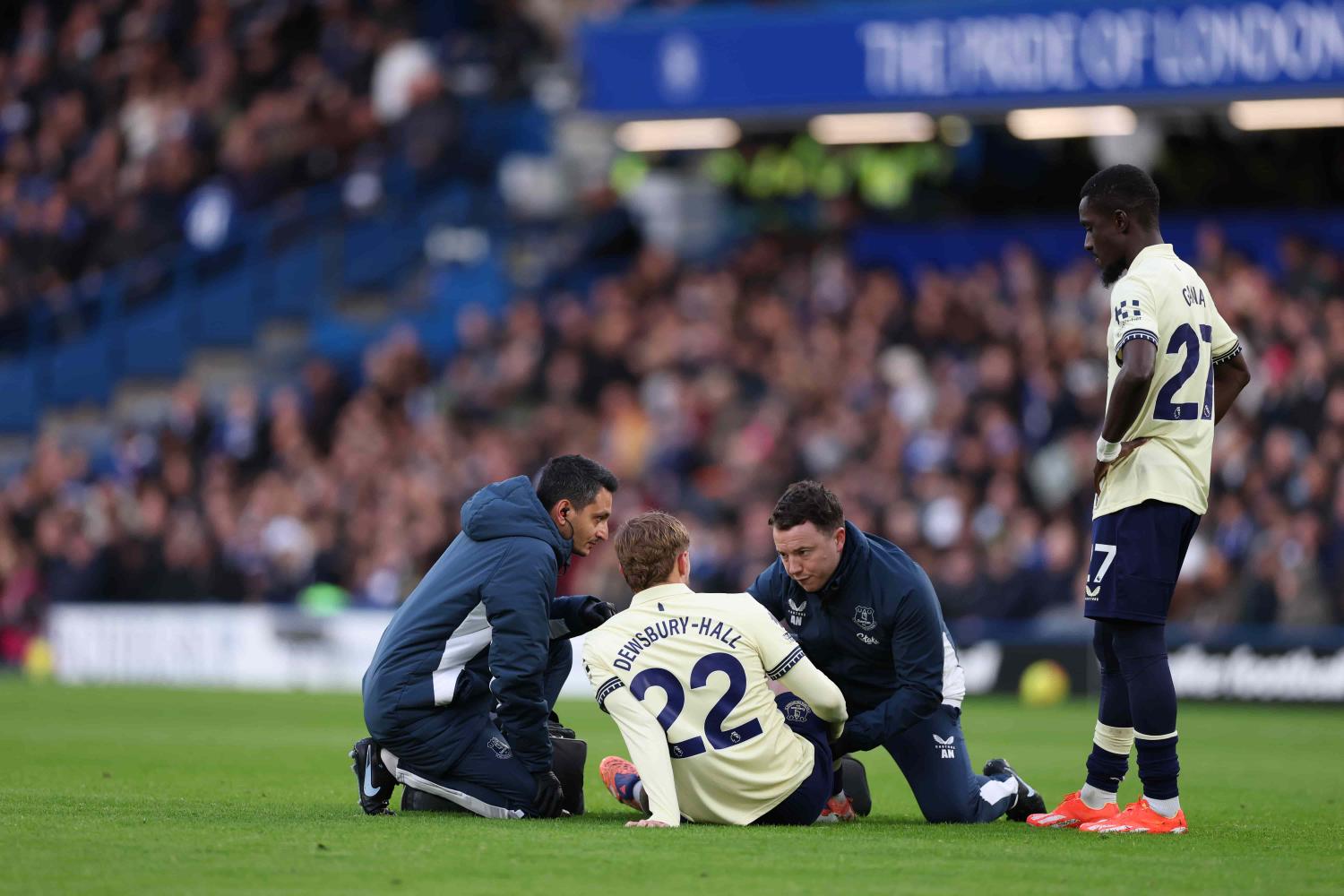
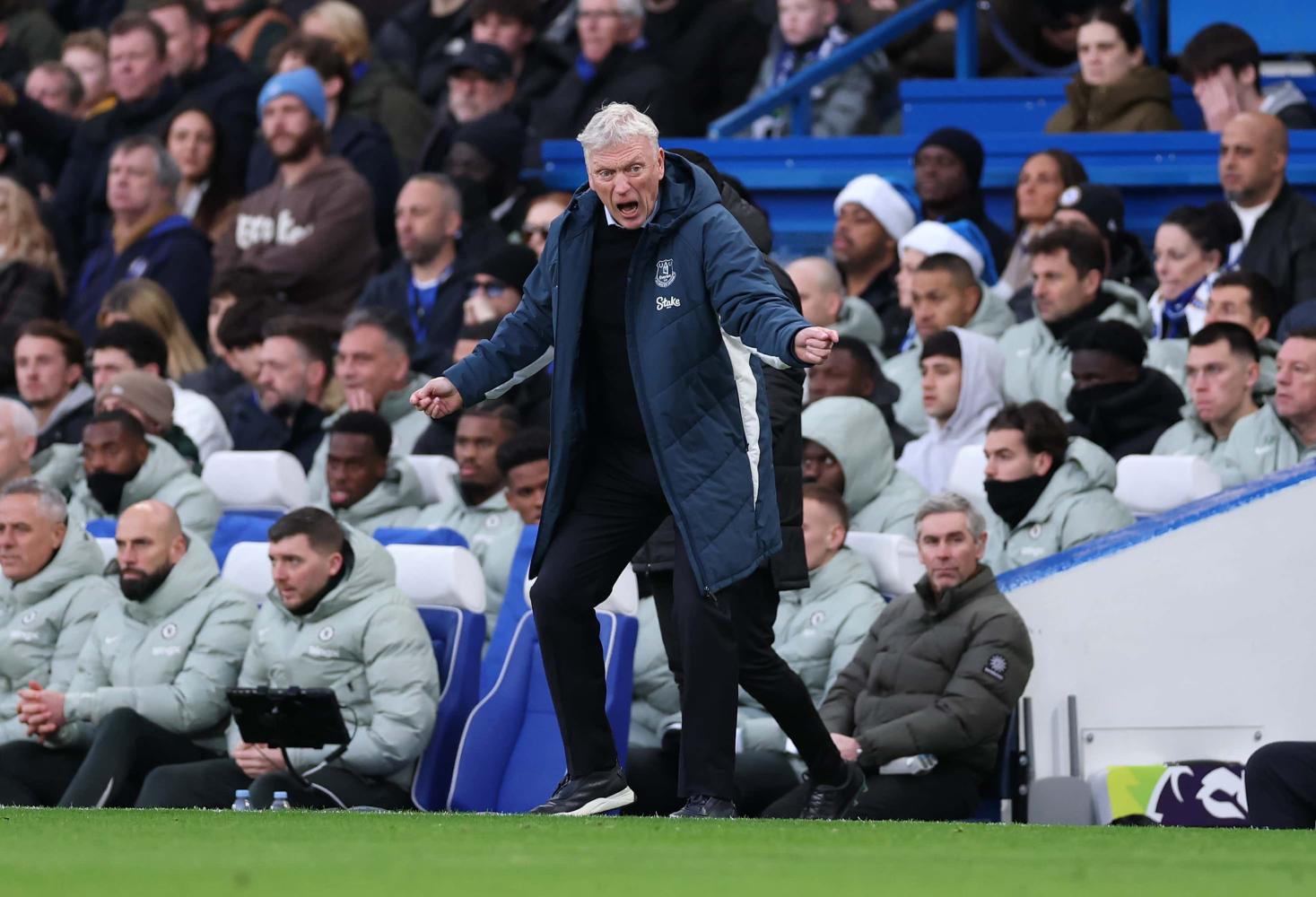
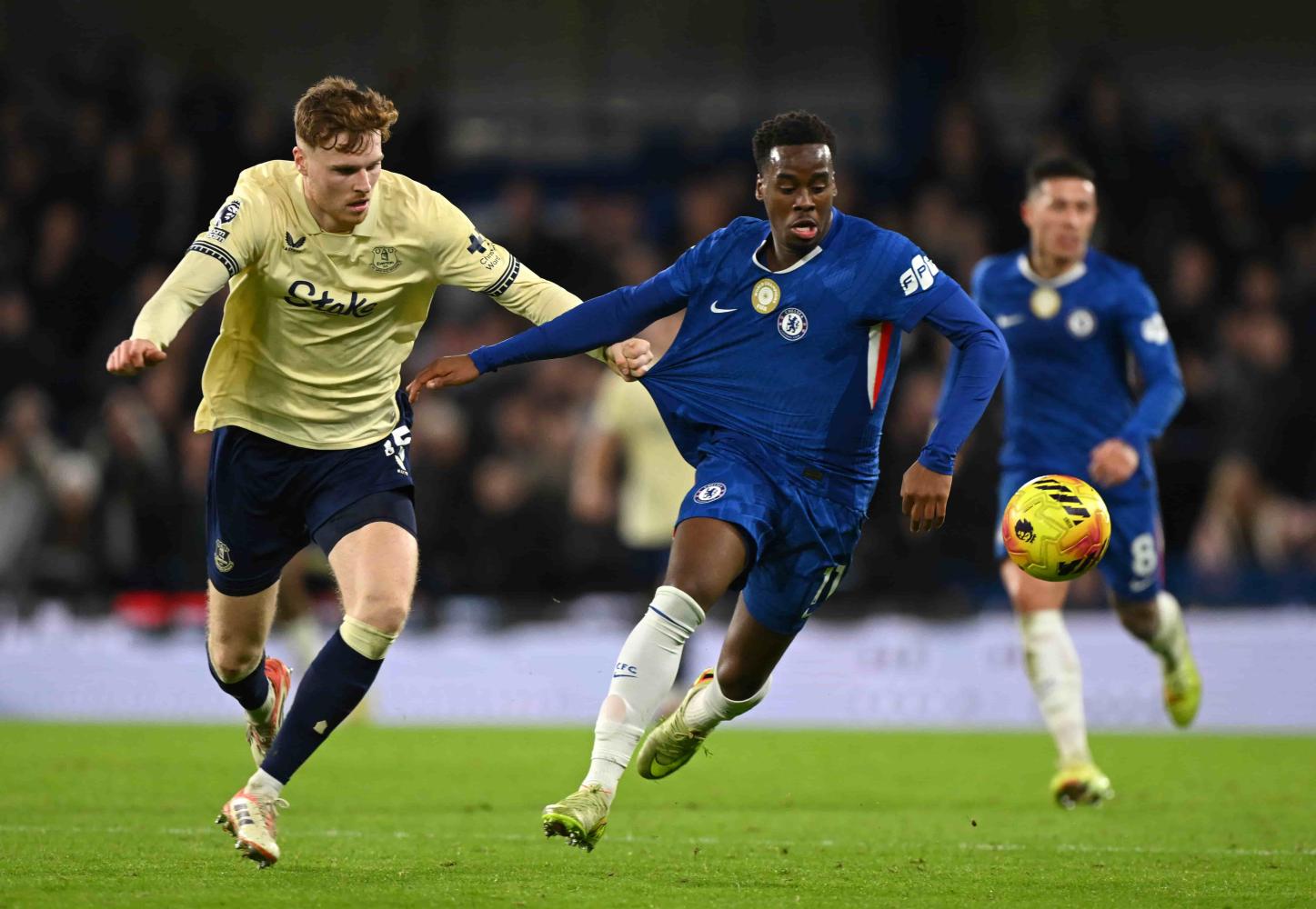
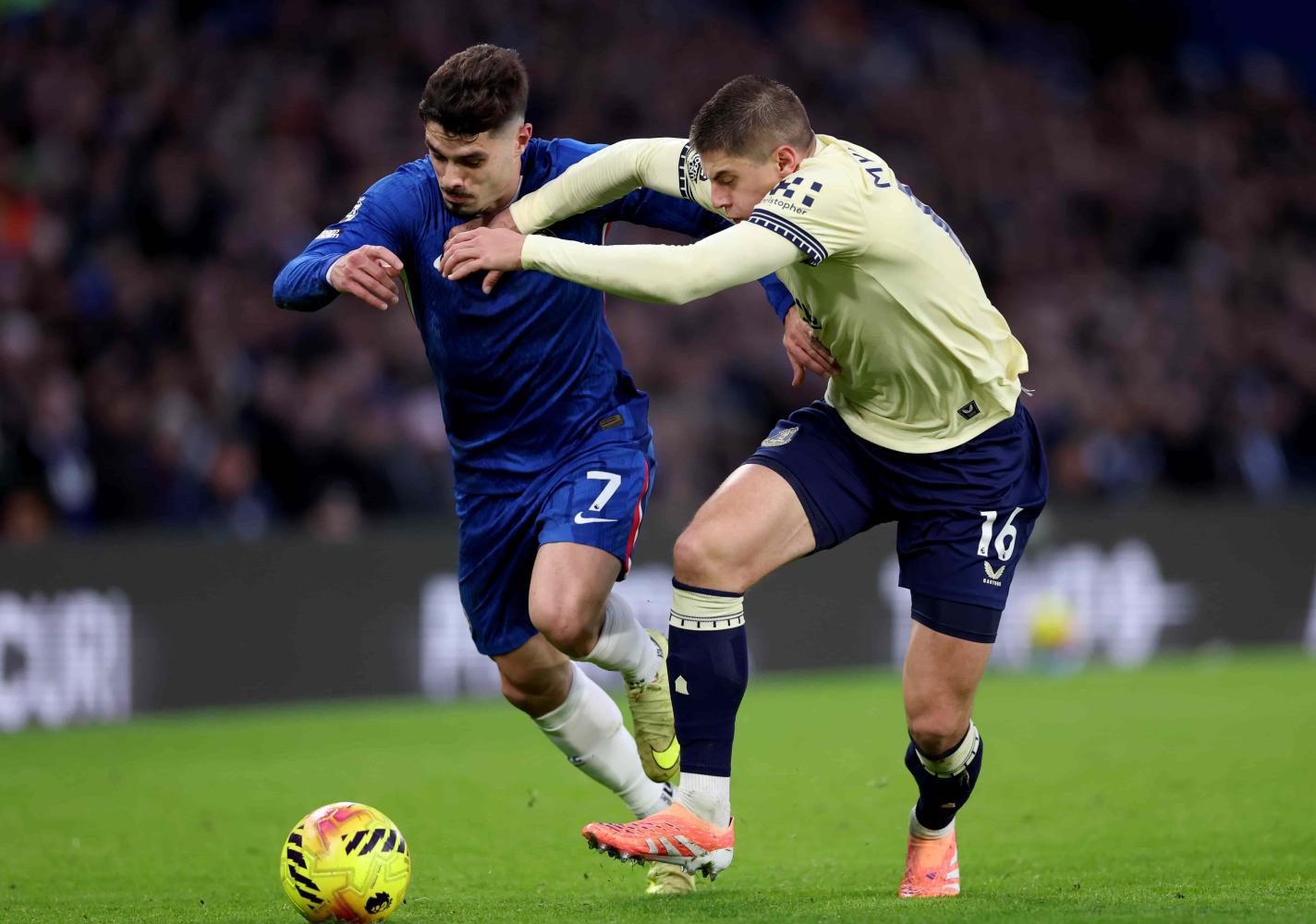
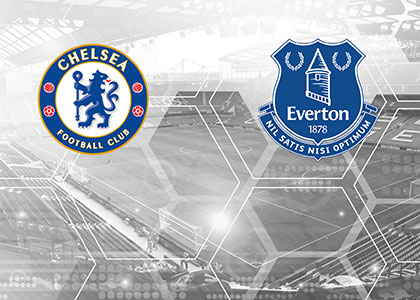


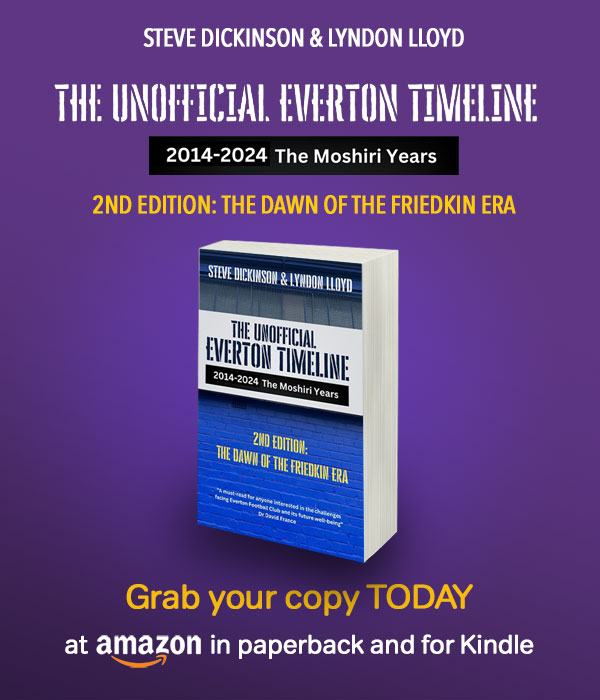
1 Posted 10/06/2024 at 18:22:41
My Dad often used to tell me when I was a boy about that 1939 team, how it was broken up by World War 2, and how his own life was irrevocably shaped by going off to navigate bombers, leaving home as a 17-year-old in 1941 and not returning to England until 1946.
I must admit, to my young ears in the early 1960s, stories about pre-war football sounded like ancient history. It's sobering to realise now that it's about as ancient history as me telling my grandsons about David Weir or Kevin Campbell.